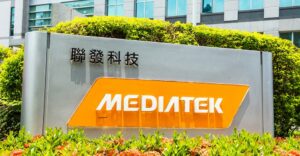
Microsoft’s Professional Developers Conference (PDC) is a relatively unique event in the industry. Unlike other conferences of its type, this one is largely staffed by Microsoft programmers — the same kind of people who generally attend these things. People tend to connect better with those who are similar to them, which makes this kind of conference vastly more powerful than those that are staffed by marketing types talking to developers about what the company will do for them in the future (but often having no actual clue about what is really going on at the company).
The people presenting at the Microsoft event are the very same people who are managing the development process in Microsoft. While they can get ahead of themselves with regard to what will actually hit the market — and as a result have had a bit of trouble being realistic with regard to release dates in the past — these problems are shared in spades with other firms where the marketing promise has little connection with the company’s actual capabilities.
At every PDC, there is a common theme of taking care of the developers. It is a theme that is generally driven right from the top, and in this recent case the theme was clearly center stage. I believe this is because of the impact of open source and the realization that if Microsoft doesn’t bring developers into the process of creating the next platform, those developers are at increased risk of competitive migration to Linux.
Microsoft’s Goal
Microsoft’s goal, as the dominant provider, is to create an environment that is “good enough” — not necessarily superior — in comparison with the competing platforms. The biggest advantage a dominant provider has is incumbency. Because people don’t like change, if the software is “good enough,” then the drivers for change won’t emerge.
The core of this latest PDC was Longhorn, which, despite reports of a 2006 release a few weeks ago, is currently on track for a 2005 release based on the announced 2004 beta cycle. Microsoft appears to be setting expectations that it believes it can exceed, which is a relatively unique practice for Microsoft — or any vendor, for that matter.
The Longhorn spec, which will be fluid until the product is released to manufacturing, is covered in detail in other articles. But, in general, the operating system will have a user interface not unlike Apple OS X. It will be optimized for Intel’s Pentium 5 and AMD’s Athlon 64, and it will have a presentation system that leverages current graphics capabilities.
In addition, it will have an integrated file system designed to improve data discovery and access. It also will have a level of security associated with it that should exceed that provided by Linux and Apple today, although those platforms clearly will not stand still over the next two years either. Linux — through IBM, HP and Intel — likely will gain similar capabilities over the next two years.
Microsoft Exposures
Microsoft’s biggest long-term exposures include a painful migration path from Unix, a lack of adequate default user authentication and widespread belief that Microsoft itself is the major problem that needs to be corrected. No matter how you look at it, Linux offers an easier path when migrating from Unix. It is not yet clear whether Microsoft can close this gap significantly. Clearly, on the desktop, this exposure is insignificant, but it will show up most prominently in the anticipated Windows Server 2006 product that will be based on Longhorn.
The full set of Windows 2005 benefits will require both client and server to be in place. People often choose to take the easy path and don’t like to learn new tools. Linux tools are either the same or very similar to Unix, a fact that will probably keep this platform favored for those moving away from Sun or from HP’s or IBM’s Unix offerings.
While trusted systems are a good step, I still recall the security test that IBM failed. The test had little to do with the security of the site and everything to do with not providing adequate user authentication. Until this last is effectively and broadly addressed, the industry will remain exposed regardless of platform.
While the PDC was heavily attended — in fact, it set attendance records — it doesn’t come close to capturing all of the developers the company needs to touch because most can’t get to the event. Successful events must be better enabled for a remote audience, and, whether it is an open-source or Microsoft conference, successful future events must embrace the Internet to reach the full potential attendance and impact they need.
The Battle Ahead
Microsoft has always done well by being the moderate choice, not as far right as the vertically integrated vendors like Sun and Apple, and not as far left as Linux and BSD. Microsoft has occupied the populist middle. However, because of a series of mistakes regarding image, pricing and security, the market is shifting. It isn’t that the market moved left or right. It’s more that it moved away from Microsoft, and the company has had to shift itself to address this change.
To adapt quickly, the company is adopting popular open-source software practices. But the risk is that the market might not be moving toward open source as much as it is moving away from Microsoft. If that is true, then Microsoft must rebuild its image, or the product benefits simply won’t have the impact that Microsoft seeks.
While events like the PDC do a great deal to rebuild the perception of Microsoft in the developer community, the company still must rebuild its perception in the user community. Too many users filter everything Microsoft does through the belief that it is a dishonest and unreliable company. Unless that belief is changed, there is little Microsoft can do technically to stop the momentum away from the company. IBM’s Louis Gerstner had to make some difficult decisions to repair IBM’s image. Microsoft must step up to this challenge or face missing the full potential of Longhorn.
Given the team the company has working on this product, my bet is that the company will hit the product design goals hard, but I’m still not convinced the company is willing to tackle the image problem adequately, which makes the eventual outcome increasingly uncertain.
For their part, Linux and Apple will need to step up to the competitive risk that Windows 2005 represents to avoid the fate of OS/2 and of Apple in 1995. If the Linux and Apple communities spend more time writing rhetoric than code, 2005 is likely to look a lot like 1995.
Rob Enderle, a TechNewsWorld columnist, is the Principal Analyst for the Enderle Group, a company founded on the concept of providing a unique perspective on personal technology products and trends.






















































<For their part, Linux and Apple will need to step up to the competitive risk that Windows 2005 represents to avoid the fate of OS/2 and of Apple in 1995. If the Linux and Apple communities spend more time writing rhetoric than code, 2005 is likely to look a lot like 1995>
Yeah right! Apple and Linux are making headway and in the case of OSX, innovations now. You seem to assume that they’re going to be just standing around till 2005 waiting to see what Microsoft does? I can’t see people running to upgrade either. The scale of Longhorn is enourmous I can imagine the AM ount of bugs that will be in that release. They’ll be releasing service packs for years to come.